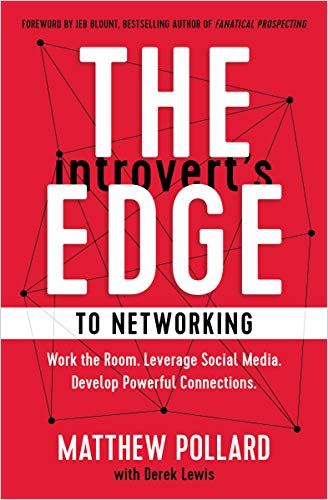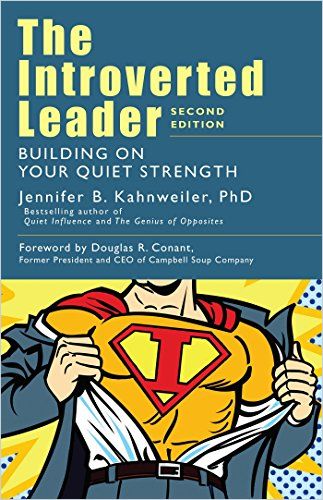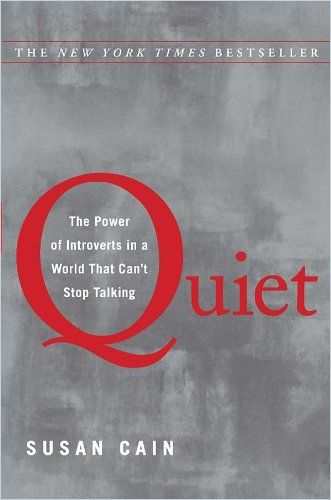The Quiet Power of Introverts

Between a third and half the population are introverts. Swiss psychiatrist Carl Jung first introduced the term in his influential work, Personality Types, in 1921. Today, psychologists largely consider introversion and extroversion among the defining features of human personality. These traits impact the way people relate to the world and each other.

Introverts feel more comfortable focusing on their inner thoughts and ideas instead of what’s happening in the external world. They enjoy spending time alone or in small groups rather than socializing in large crowds. Introverts expend energy during social interactions, while extroverts get energy from socializing. Both introverts and extroverts make valuable contributions to the workplace and their organization – yet our extroverted culture often favors the latter.
Studies have shown that introverts are promoted less frequently to leadership positions than extroverted counterparts.
Both extroverts and introverts must do their part to address this imbalance. Introverts need to learn how to play to their strengths instead of feeling forced to act like extroverts. Extroverts, meanwhile, must overcome their biases and learn how to bring the best out of their introverted colleagues. Regardless of what end of the introversion-extroversion spectrum you are on, these reading recommendations will get you started:
Introverts: Find Your Voice!
If you are unsure whether you are an introvert, take a self-assessment test. Introversion is an inherited trait. It is a form of temperament, not a defect. Simply knowing that you are an introvert empowers you to embrace your natural temperament.
Author Susan Cain‘s 2012 TED talk and subsequent bestseller, Quiet: The Power of Introverts in a World That Can’t Stop Talking, helped millions of introverts embrace their strengths instead of seeing their introversion as a handicap.

Harness the Strength of Introverts to Change How You Lead
Franklin Covey Company Read SummaryIf you are an introvert, faking extroversion will tire you out.
Don’t be afraid of “hiding in the bathroom” occasionally for some alone time to recharge during the day, introvert and business owner Morra Aarons-Mele advises. She encourages her fellow introverts to hold onto the personal boundaries that work for them instead of striving for unrealistic open borders extroverts tend to favor. Ultimately, this means developing and living by rules you design for your comfort that fit your preferences and lifestyle rather than trying to live according to rules better suited to extroverts.

Every introvert can develop extroverted skills without denying their introverted nature. For example, introverts may find improving their verbal fluency or public speaking skills useful. You may want to start with Michael J. Gelb’s eight transformational “secrets.”
As an introvert, you will likely feel that networking is not your thing. Author Matthew Pollard would like you to reconsider, arguing that people today are tired of slick, transactional interactions. Many people prefer to connect with authentic individuals. You can leverage your strengths as an introvert by focusing on developing high-value connections instead of collecting stacks of business cards.

Introversion does not put limitations on what you can do – and certainly should not prevent you from pursuing a leadership role. A survey of America’s 10 best-performing company CEOs found that all of them displayed features commonly associated with introversion: they were described by their peers with adjectives like “shy,” “quiet,” “unassuming” and “soft-spoken.” Introverts like to be well-prepared, think things through before they talk and make good listeners, which are all great leadership qualities.

Extroverts: Listen!
Nearly half of all people are introverts. Any organization invested in diversity and inclusion will want to create a workplace where introverts can thrive. Leaders must work to empower introverts, as well as create conversations about the benefits of working with different personality types.
In Creating Introvert-Friendly Workplaces, Jennifer Kahnweiler shares useful best practices:
- Trigger dialogues about introversion. Ask whether your organization is doing enough to support them.
- Intentionally address the needs of introverts, perhaps even creating guidelines regarding how to cater to introvert energy when preparing for things such as meetings and interviews.
- Encourage people in senior leadership roles to get involved. Ask introverted team leaders to share their own stories.
- Introverts experience more sensitivity to noise and light, so create quiet spaces where introverts can do focused work.
- Make your workplace a “safe space” for introverts by taking actions such as engaging in active listening – rather than interrupting – and giving others a chance to speak.
- Find ways to accommodate different temperaments. Some may work most effectively if colleagues check in on them frequently, while others need long stretches of uninterrupted focus time to work at their best.

A study from the Kellogg School, cited by Susan Cain, found that 70% of talking in meetings is done by only three people.
You can make meetings more inclusive and balanced with the following best practices:
- Introverts like to come to meetings prepared. They are also more likely to speak up if they have had an opportunity to think about their input beforehand. Help people prepare by sharing a detailed meeting agenda (and perhaps reading recommendations) in advance.
- Call on people to ask for their input or have them write their ideas on post-it notes and put them on a board.
- Allow opportunities for solo brainstorming sessions along with group brainstorming gatherings.
- Follow Amazon CEO Jeff Bezos’s example of starting meetings with a quiet reading session. Bezos often asks meeting organizers to lay out the meeting agenda in a four to five-page memo and then has participants read the memo at the start of the meeting.
A Mix of Introverts and Extroverts Make Stronger Teams
Teams and organizations function at their best if they are composed of both introverts and extroverts. Teams need quick-thinking, high-energy people and more deliberate people who challenge others to think deeply.









